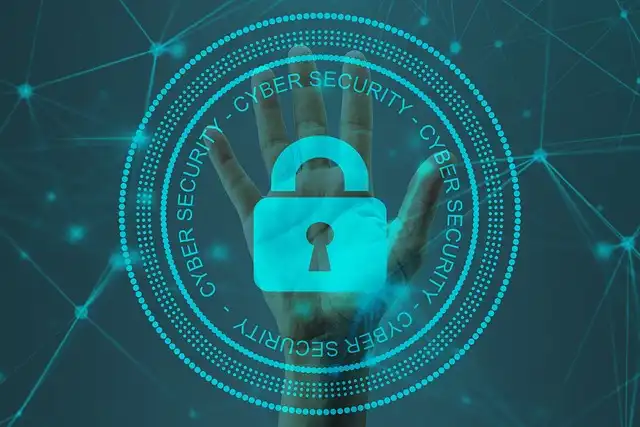Cybersecurity Automation Helps Short-Staffed Higher Ed IT Departments Protect Data

When these tools are paired with advanced machine learning algorithms and behavioral analytics, “universities can continuously monitor network traffic for anomalies, isolate compromised systems in real time and automatically apply patches to vulnerable endpoints.”
They categorize the events, offering a clear introduction of what happened, exactly how it happened and what systems were influenced,” Phang claims.
At the exact same time, institutions are shorthanded. In education and learning, 38% of IT leaders said their organizations do not have adequate understanding of staffing requires around cybersecurity, according to the “2024 CDW Cybersecurity Research Report.” Only 10% of respondents considered themselves completely staffed.
“Microsoft Defender XDR accumulations all cloud events and events, consisting of those from Microsoft 365 and other sources. The SIEM device addresses on-premises events and occurrences. They classify the occurrences, offering a clear summary of what occurred, exactly how it took place and what systems were affected,” Phang states.
All of this maintains her team one action in advance. In general, we get over 1,000 correlated occasions per day,” Gonzales claims.
“We’re taking logs from every little thing, and the SIEM system is correlating all of those events to produce a customer actions,” she states. “Our SIEM system processes a standard of 220 million occasions per day,” she says. In automation, “everything starts with a stock, recognizing what you have and what you need to shield: your data and your systems,” claims Gonzales. With that stock in hand, “you can identify the vital systems to feed into whatever tool you pick,” she states.
Phang describes a landscape that clearly strains the limits of by hand driven cyber feedback. “In an ordinary week, we may recognize in between 400 and 500 events that might possibly be safety occurrences,” he states. “Provided our restricted staff, managing this volume efficiently is nearly impossible.”
At NTCC, “automation has been a game changer for reinforcing our cybersecurity defenses,” Barron states. “We have actually carried out Fortinet’s collection of devices to automate numerous aspects of our cybersecurity operations, consisting of danger detection, incident feedback and network monitoring.”
And virtual incident response is just a part of his work. “We are responsible for other crucial jobs such as risk evaluation, susceptability administration, risk searching, vendor threat assessments, agreement reviews and service-level contract management,” he claims. Because there’s no automation available to support those jobs, automating where he can becomes twice as important.
Specify your objectives. Before releasing an automated capacity, require time in advance to define clearly just what you’re hoping to get out of it, says Phang: “Whether your focus gets on lowering time, enhancing coverage or enhancing action prices, pick one priority and focus on that. In safety and security, trying to attend to every feasible problem at once is not realistic.”
“Because of the intricacy and the number of systems, if you do not have automation running in your atmosphere, it’s really tough to keep up, specifically when it comes to the information security room,” he states. “The faster you can respond, the more likely you are to reduce the threat of bad things taking place.”
“We’re taking logs from every little thing, and the SIEM system is correlating all of those occasions to create an individual actions,” she says. “We likewise bring in hazard information from IBM’s threat resource and other hazard resources.
Phang, as an example, needs to make sure cybersecurity for concerning 4,000 pupils and greater than 500 team member. Microsoft Protector prolonged detection and reaction combined with a security info and event monitoring solution give a feedback to these challenges, he states.
These devices “integrate seamlessly with our existing facilities and enable us to automate repetitive and time-consuming tasks, such as log evaluation, spot monitoring and vulnerability assessments,” he states. “This has actually allowed our IT team to act swiftly in action to possible risks, usually before they can influence our systems.”
Provided these obstacles, “automated hazard discovery and removal are important tools of the cybersecurity ecosystem” in higher education, claims IEEE elderly member Rahul Vishwakarma. When these devices are coupled with sophisticated equipment learning algorithms and behavior analytics, “colleges can continuously keep an eye on network web traffic for anomalies, isolate jeopardized systems in real time and immediately use patches to susceptible endpoints.”
“We have greater than 100,000 identities, and the numbers aren’t as crucial as the demographics. We turn over possibly over half of our identities yearly due to the fact that we create identifications for our applicants,” states Carol Gonzales, associate vice head of state of IT safety and conformity and CISO. “Unlike a private sector where you have a steady ecosystem, ours is continuously changing.”
Display and enhance. In cybersecurity, automation should not be a “one and done” effort, claims Barron. “Automation requires continuous surveillance to ensure it’s functioning as meant,” he claims. “Regularly testimonial and maximize your automated procedures to adjust to developing dangers.”
Gonzales explains automation as the trick to handling an otherwise frustrating volume of cyber activity. “Our SIEM system processes approximately 220 million occasions per day,” she claims. “These log occasions are accumulated and refined to ‘offenses’– concerns, transgressions– by correlating log occasions and task” using predefined policies, which takes the number down to between 700 and 900 offenses each month.
“Automation has actually considerably decreased the problem on our IT team, releasing them up to concentrate on even more strategic campaigns, such as improving individual experience, improving system performance and advancing our cybersecurity structure,” he claims.
At Ashland University, CISO Kong Phang knows what that feels like. “The frustrating quantity and variety of informs and methods that require tracking” provide a significant challenge, he states. “The sheer number and complexity of these threats make it difficult to respond and track to all of them by hand.”
For his six-person framework team, “our key obligation is to secure a diverse series of systems and endpoints, serving around 3,000 pupils and 400 faculty and staff members,” claims Barron, director of the computer and venture services division.
Automation makes those events workable. “The threat knowledge sustains prioritization, permitting us to categorize. Points that have to do with delicate systems get higher concern. Points that include sensitive individuals get top priority,” she says. This assists the team to target its initiatives and maximize its effect.
Develop the baseline. In automation, “whatever begins with a stock, knowing what you have and what you require to shield: your data and your systems,” says Gonzales. Keeping that inventory in hand, “you can recognize the critical systems to feed into whatever tool you choose,” she claims.
For Phang, time is the big win. “While automation can not handle every little thing, it dramatically decreases the time spent on high-priority tasks, permitting me to concentrate on more tactical job,” he states.
When college invests in automation on behalf of cybersecurity, IT teams get back the moment they need to focus on higher-level tasks, and protection improves on the whole. “It’s truly about identifying the most crucial threats and doing it in a prompt way,” Gonzales says. “It has to do with working smarter, not harder.”
Both devices consist of prolonged discovery and response solutions, which immediately attend to cases by recognizing, validating and avoiding destructive task in genuine time. This automated approach “reduces my workload to evaluating about 20 to 30 incidents a day, a workable number,” he states.
And security itself is more powerful. The change to automation “has brought about an extra aggressive technique to protection, enabling us to anticipate and reduce threats rather than merely reacting to them,” Barron states. “Automation has enhanced our response times and accuracy in recognizing and attending to hazards, which is critical given the enhancing complexity and volume of cyberthreats today.”
“We look after an intricate setting that includes not only typical endpoints such as desktops and laptop computers but additionally specialized systems such as our trainee information system, discovering monitoring system, and the lately executed OneCard system for university access and purchases,” he claims. That’s in addition to taking care of network infrastructure, web server atmospheres and numerous databases.
1 automation2 CDW Cybersecurity Research
3 Cybersecurity Research Report
4 systems
« Short-term Pell pilot boosted enrollment but not earningsTrump names Linda McMahon for education secretary »
